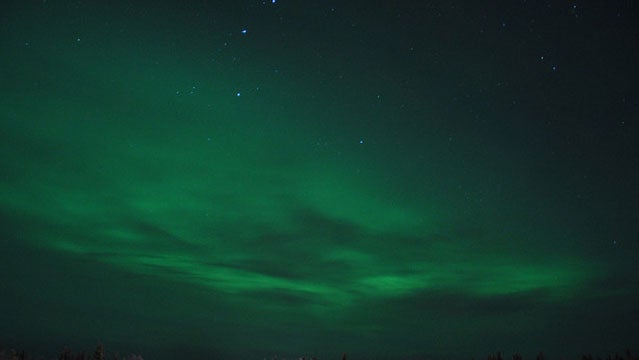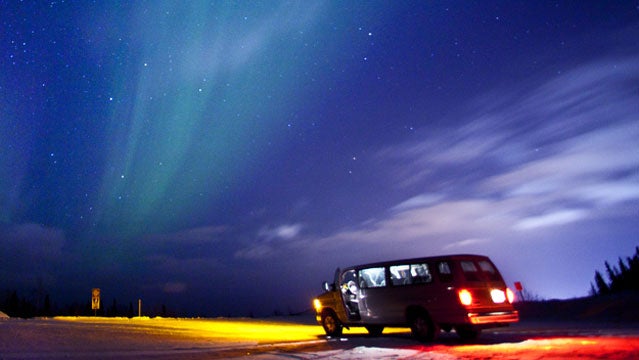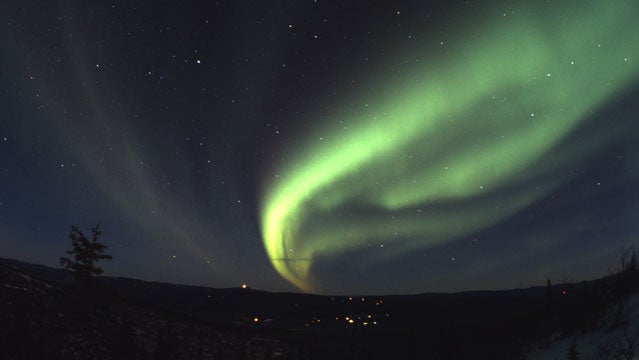If you want to cross “watching the Northern Lights” off your bucket list this year, you’re in luck. Thanks to the natural cycles of solar activity, the earth is in the midst of a peak period of Aurora Borealis activity. This flashy electric dance of atoms in the sky forms when highly-charged electrons carried by solar wind react to elements high in the earth’s atmosphere. You’ll find a .
The basic rule: the closer you get to the magnetic pole, the better your chances of spotting it. So, Alaska and Canada’s Northwest Territories are the prime locations—although it’s been known to creep much farther south, as folks in Michigan’s Upper Peninsula will tell you. I’d recommend these towns in North America for the greatest chance of success, especially between now and April, when the nights are longer and clearer. Consult , and remember: the farther you get from civilization—lights, people, electricity, etc.—the clearer the sky will be.
Fairbanks, Alaska
Yellowknife, Canada
Seeing the Aurora Borealis: Yellowknife, Canada

Yellowknife in the Northwest Territories is the closest you’ll find to an actual tourist destination for the Aurora Borealis. Sky gazers from around the world come to this frigid-but-welcoming spot specifically to stay up late and watch the Northern Lights from the comfort of a heated seat at the somewhat-primitive outside of town. The cost of a night viewing session, including transportation from your hotel, is $120.
Seeing the Aurora Borealis: Fairbanks, Alaska

The clouds can sometimes cover Fairbanks in the winter, and on occasion the Northern Lights don’t dip far enough south to ignite the sky over town, but it’s the most civilized—and easiest-to-access—place to base your Aurora hunt from during the long Alaska winter. Stay at —on a hilltop about 20 miles outside the city, with views in every direction of the night sky—or take one of its viewing tours, which cost $75, including transportation from town. Rates for the main lodge start at $199 per night.


